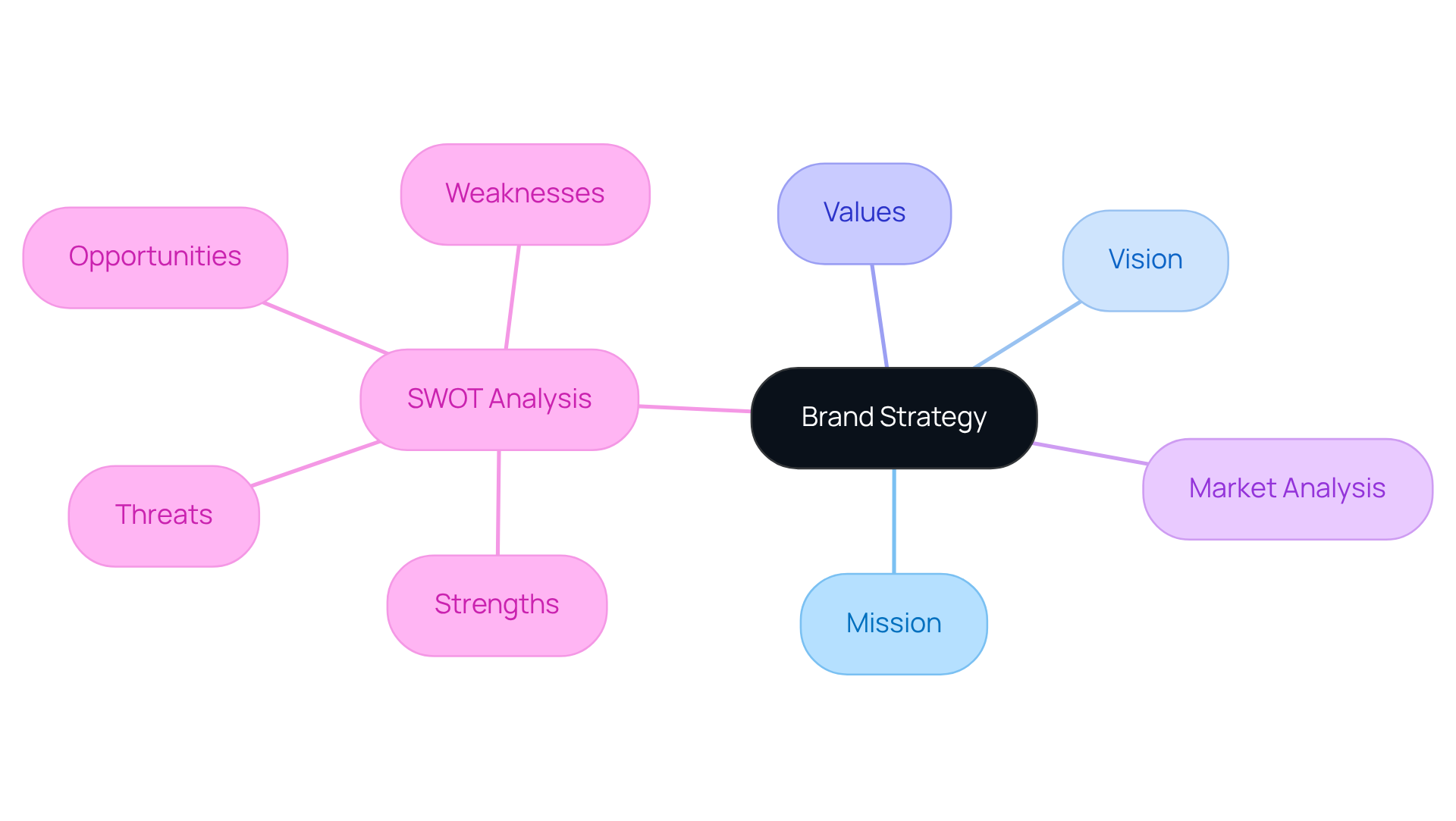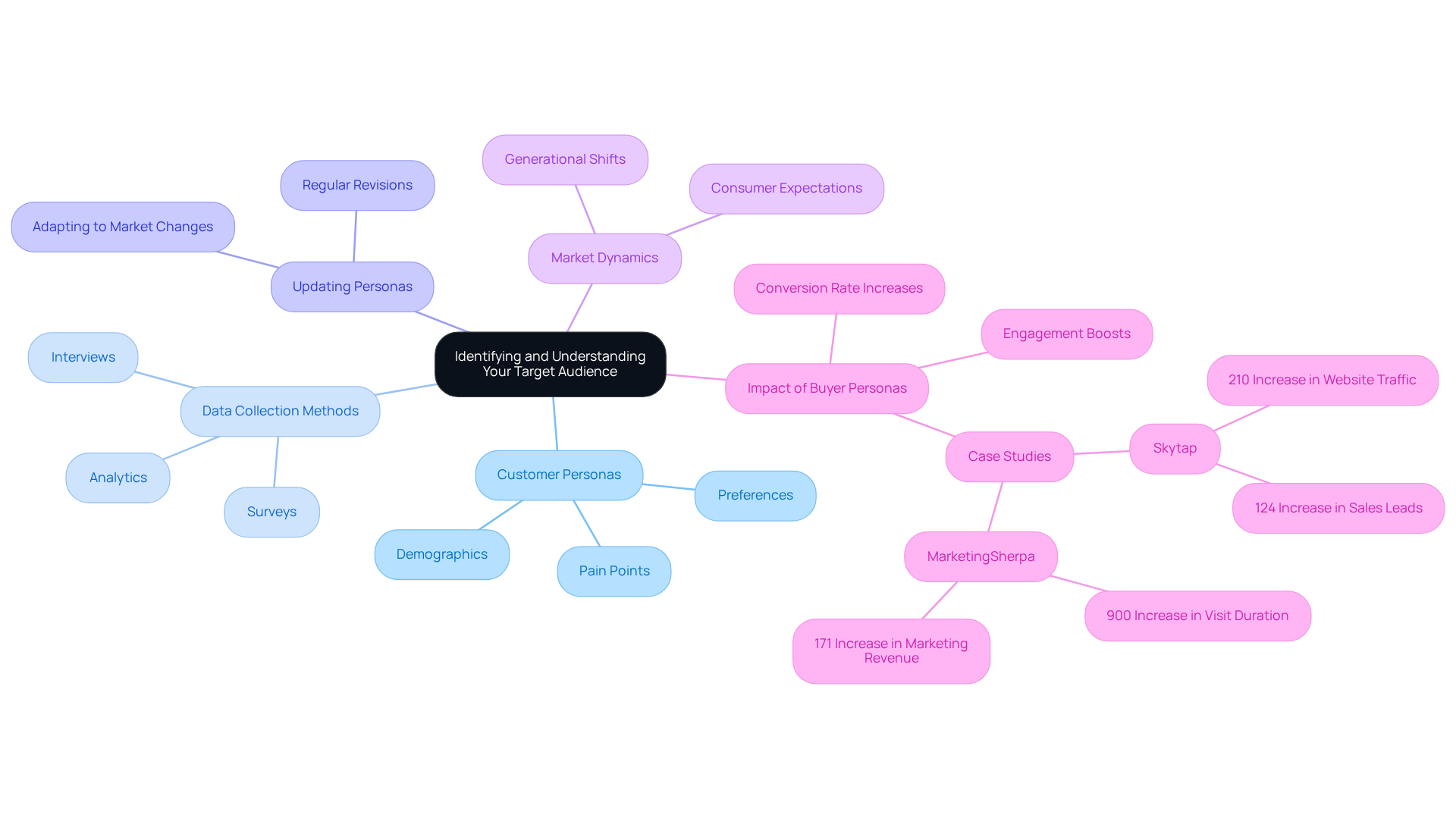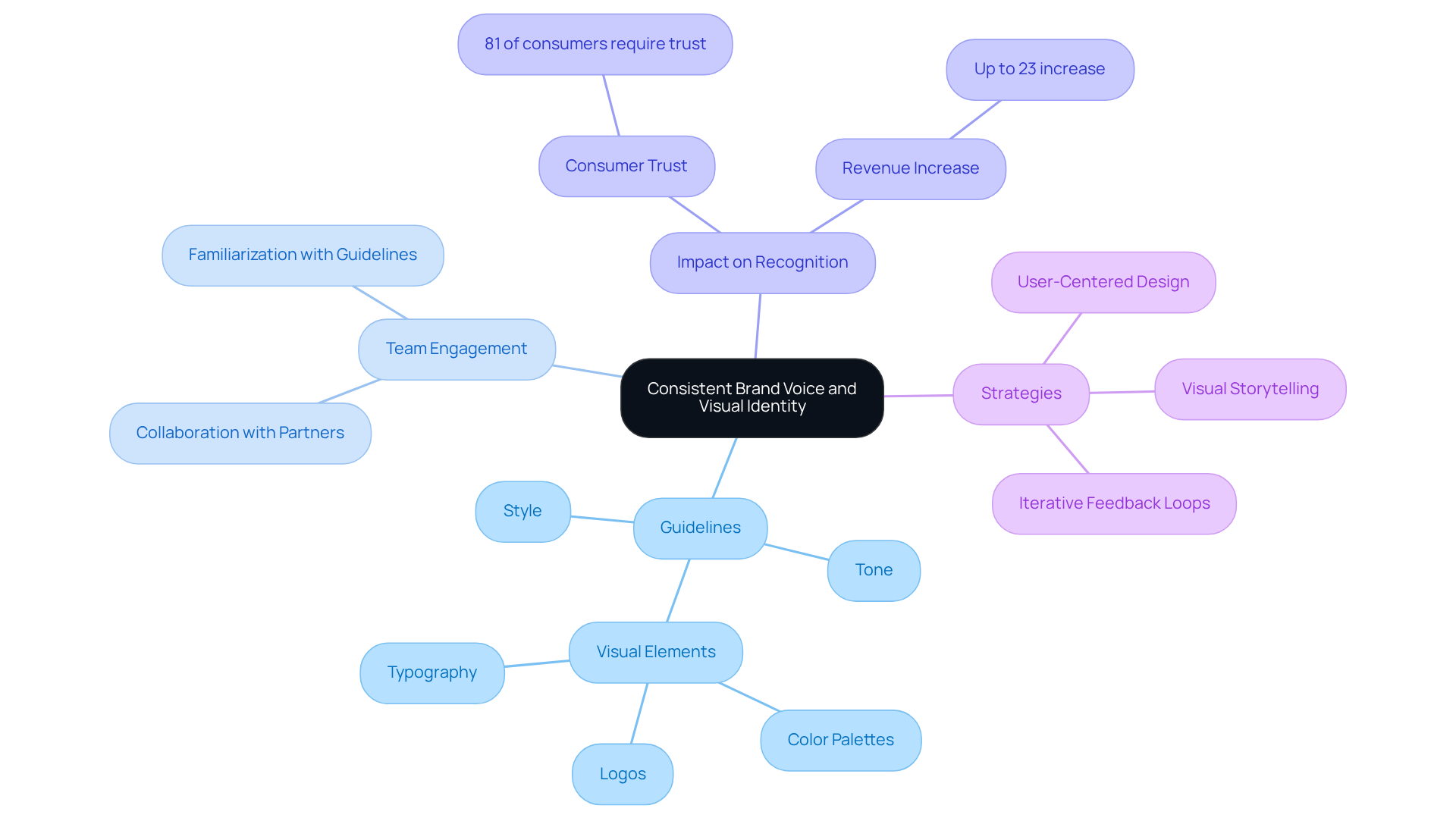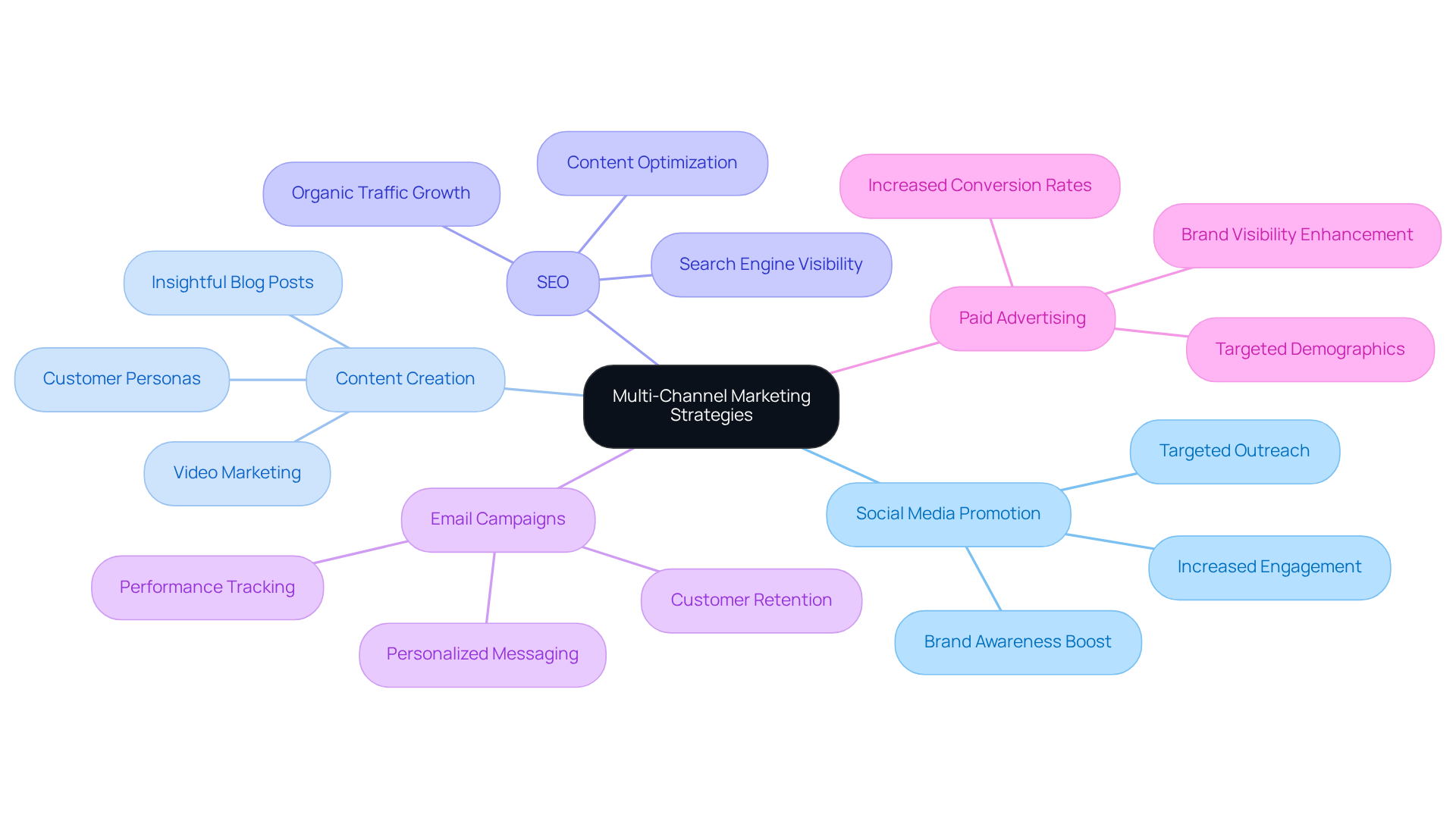Overview
In the fast-paced world of consulting, many founders struggle with branding. This challenge can lead to a lack of visibility and trust, making it difficult to connect with potential clients. The good news is that there are effective practices to help you navigate this landscape with confidence.
One essential practice is establishing a clear brand strategy. It’s crucial to understand who your target audience is and what they truly need. By diving deep into market analysis, you can differentiate your brand and ensure it resonates with those you aim to serve. Additionally, creating customer personas can enhance engagement, making your messaging feel personal and relevant.
Consistency is key in maintaining a brand voice and visual identity. This consistency builds trust—a vital component in any relationship. When clients see a unified brand across all platforms, they are more likely to feel secure in choosing your services.
Lastly, leveraging digital marketing strategies can significantly improve your visibility. Multi-channel marketing not only enhances brand awareness but also drives sales, allowing your business to thrive. Each of these practices is supported by evidence, demonstrating their effectiveness in the consulting landscape.
By embracing these strategies, you can cultivate a brand that not only stands out but also connects deeply with your audience. Remember, you’re not alone in this journey; many have walked this path and found success. Let’s support each other in building a brand that truly reflects your vision and values.
Introduction
Creating a unique brand identity in the consulting industry is not merely a luxury; it is essential for thriving in today's competitive environment. Many organizations find themselves struggling with the intricacies of developing a clear brand strategy, truly understanding their target audience, and ensuring a consistent brand voice.
This article explores four vital practices that can significantly elevate branding efforts in consulting, offering valuable insights for firms eager to strengthen their market presence. Yet, what occurs when the strategies that appear effective fail to deliver the anticipated results? By examining these challenges, we may uncover the hidden keys to successful branding in consulting, guiding you towards a more fulfilling branding journey.
Establish a Clear Brand Strategy
Creating a clear identity strategy can often feel overwhelming for many organizations. Without a well-defined , it becomes challenging to articulate what your identity truly signifies and how it stands apart from competitors. This uncertainty can lead to confusion within your team and a diluted brand message, making it difficult to connect with your audience.
By conducting a thorough market analysis, you can better understand industry trends and competitor positioning, which is essential to addressing these challenges. Tools like SWOT analysis (Strengths, Weaknesses, Opportunities, Threats) can be invaluable in identifying your product's unique selling propositions. For example, a tech startup may find that emphasizing innovation and customer-focused solutions is vital to its identity.
Documenting this strategy in a brand guide not only provides a reference for all team members but also fosters alignment in messaging and actions across the organization. In this way, you can cultivate a cohesive identity that resonates with both your team and your customers, creating a strong foundation for your startup's success.

Identify and Understand Your Target Audience
To effectively identify and understand your target market, you might find it helpful to begin by developing detailed that encapsulate your ideal clients. Consider utilizing data collection methods such as surveys, interviews, and analytics to uncover insights into their demographics, preferences, and pain points. For instance, a branding agency may discover that their target market predominantly comprises tech-savvy millennials who prioritize sustainability in their purchasing decisions. This understanding allows you to customize your messaging and marketing approaches, fostering a deeper connection with the interests and values of your target group.
It's important to regularly revisit and update these personas, as market dynamics can shift rapidly. Research shows that over 50% of consumers expect companies to anticipate their needs and provide relevant suggestions proactively. Moreover, 74% of buyers feel frustrated when website content is not personalized. Successful cases from consulting branding agencies illustrate that those who utilize buyer personas can achieve significant boosts in engagement and conversion rates. For example, Skytap experienced a remarkable 210% rise in website traffic after embracing this approach. Additionally, a case study by MarketingSherpa highlighted that companies using buyer personas reported a 900% increase in visit duration and a 171% rise in marketing-generated revenue.
By aligning your efforts in consulting branding with the insights gained from demographic analysis, you can cultivate stronger connections and drive sustainable growth. However, it's essential to be cautious of misapplying target analysis or creating flawed buyer personas, as this can lead to ineffective marketing strategies. Remember, understanding your audience is not just about data; it's about nurturing relationships that resonate with their needs.

Maintain Consistent Brand Voice and Visual Identity
To ensure a cohesive voice and visual identity, many face the challenge of establishing comprehensive guidelines that detail tone, style, and visual elements, including logos, color palettes, and typography. At RNO1, we understand the importance of a design-focused approach across every touchpoint. Our guidelines not only reflect our identity but also aim to resonate with our audience, nurturing a deeper connection.
It’s essential that all team members and external partners familiarize themselves with these guidelines. For instance, a consulting branding firm might find that a professional yet approachable tone in its communications, paired with a consistent color scheme across all marketing materials, can make a significant difference.
Regular audits of the company's presence across various platforms can reveal inconsistencies and areas for improvement. This practice not only enhances product recognition but also reinforces trust, as 81% of consumers require confidence in a product before making a purchase. Moreover, maintaining a consistent corporate identity can boost revenue by as much as 23%.
By prioritizing a cohesive identity presentation and leveraging design as a prominent solution, consulting branding firms can implement strategies such as user-centered design, iterative feedback loops, and visual storytelling. These strategies can significantly enhance customer perception and loyalty, ultimately driving business success.
We invite you to consider how these insights can .

Leverage Digital Marketing Strategies for Brand Visibility
Improving product visibility through online promotion can feel overwhelming, especially for tech startup founders. The challenge of standing out in a crowded digital landscape is a common pain point, and it can lead to feelings of frustration and uncertainty. However, there is a nurturing path forward.
Adopting a multi-channel approach is crucial. This means embracing:
- Social media promotion
- Content creation
- SEO
- Email campaigns
For example, consider how a tech startup might develop insightful blog posts that address industry challenges. Sharing these insights across social media platforms and optimizing their website for search engines can significantly drive organic traffic.
Moreover, utilizing paid advertising on platforms like Google and Facebook allows for targeted outreach to specific demographics, greatly enhancing visibility. It's important to remember that routine performance evaluation of these digital initiatives is essential. This not only helps startups refine their strategies but also optimizes their return on investment.
Statistics show that companies employing multi-channel marketing strategies can achieve a 30% increase in marketing efficiency and a 20% rise in overall sales. This underscores the effectiveness of this approach in fostering brand visibility and customer engagement. Together, we can navigate these challenges and .

Conclusion
In today's competitive marketplace, establishing a robust consulting brand can feel daunting. Many firms struggle to differentiate themselves, and this can lead to confusion about their mission and values. It’s essential to recognize that a well-defined brand strategy not only clarifies these aspects but also aligns your team and messaging. This alignment ensures that your identity resonates with your target audience, fostering a connection that is vital for success.
As we reflect on the key practices highlighted throughout this article, it becomes clear how crucial it is to understand your target audience through data-driven insights. By engaging with your customers and creating detailed personas, you can maintain a consistent brand voice that speaks directly to their needs. Embracing multi-channel digital marketing strategies can further enhance your brand's visibility and engagement, making your presence felt in the marketplace. These elements work together harmoniously, strengthening your consulting brand and driving sustainable growth.
The significance of effective branding in consulting is profound. It shapes perceptions, builds trust, and fosters lasting relationships with clients. By implementing these best practices, consulting firms can navigate the complexities of the market with confidence. Remember, embracing these strategies today will pave the way for a more impactful and recognizable brand in the consulting landscape of tomorrow. Together, let’s create a brand that not only stands out but also resonates deeply with those you aim to serve.
Frequently Asked Questions
Why is it important to establish a clear brand strategy?
A clear brand strategy is essential for articulating your organization's identity, distinguishing it from competitors, and connecting effectively with your audience. Without it, there can be confusion within your team and a diluted brand message.
What components are necessary for a strong brand identity?
A strong brand identity requires a well-defined mission, vision, and values. These elements help clarify what your identity signifies and how it stands out in the market.
How can market analysis help in developing a brand strategy?
Conducting a thorough market analysis helps organizations understand industry trends and competitor positioning, which is crucial for addressing challenges in brand identity and messaging.
What is a SWOT analysis, and how does it aid in brand strategy?
A SWOT analysis identifies Strengths, Weaknesses, Opportunities, and Threats related to your product. It helps pinpoint unique selling propositions that can enhance your brand identity.
How can documenting a brand strategy benefit an organization?
Documenting a brand strategy in a brand guide serves as a reference for team members and fosters alignment in messaging and actions, leading to a cohesive identity that resonates with both the team and customers.
What is the ultimate goal of establishing a clear brand strategy?
The ultimate goal is to cultivate a cohesive identity that creates a strong foundation for your startup's success, enabling better connections with your audience and enhancing overall brand perception.




